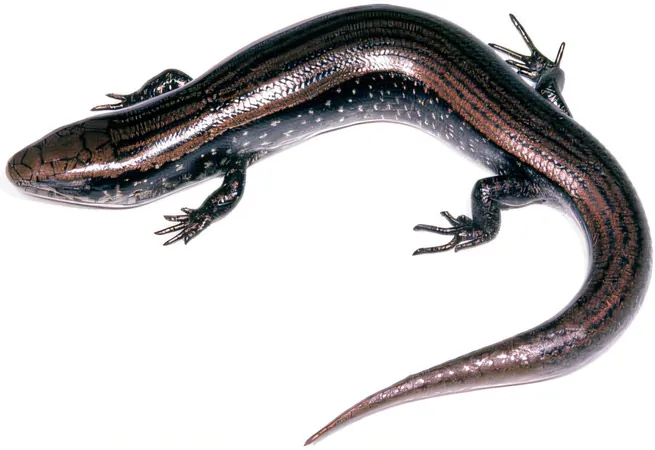
35 New Lizard Species Discovered in the Caribbean - Can They Survive?
2024-12-18
Author: Nur
35 New Lizard Species Discovered in the Caribbean - Can They Survive?
A groundbreaking study from Temple University’s College of Science and Technology has unveiled an astonishing 35 new species of forest lizards native to the Caribbean islands. This remarkable finding, however, comes with a stark warning: without immediate and effective conservation measures, these unique creatures may soon vanish.
Published in the esteemed journal Zootaxa, the research article titled "A new forest lizard fauna from Caribbean islands (Squamata, Diploglossidae, Celestinae)" elaborates on the delineation of 17 newly identified species, the elevation of 17 subspecies to full species status, and a reclassification of one species previously considered a synonym. The pivotal research was led by S. Blair Hedges, a prominent figure in biodiversity studies at the university, alongside recent Ph.D. graduate Molly Schools.
"This work reveals a fascinating diversity of species on Caribbean islands that we didn't know existed before this study," Hedges remarked. "The next step is figuring out how to keep these species from going extinct."
The comprehensive 306-page study was conducted through rigorous fieldwork and laboratory analysis, examining an extensive collection of 958 museum specimens, together with molecular analyses to trace their evolutionary relationships. Many of these lizards had not been documented for over two centuries, complicating the researchers' efforts. Fortunately, they managed to secure tiny tissue samples from preserved specimens housed in prestigious museums in cities like London, Paris, and Harvard, which were then subjected to detailed DNA analysis.
"When the results came back, I was ecstatic," Hedges expressed. "The ancient DNA sequence placed these species in the tree of life when other methods could not for the last 200 years."
Using the Red List method — a critical system for assessing species at risk of extinction — the research team alarmingly discovered that over half (54%) of the newly identified Caribbean forest lizards face extinction threats. This figure is striking when compared to the average threat level of just 21% among reptile species worldwide. Of the new species, 14 are classified as critically endangered, denoting the highest level of risk, while three may already be lost to history.
The researchers attribute the plight of these lizards to a mix of dire factors. "Primary forests are disappearing rapidly on Caribbean islands," Schools explained. "These forest lizards are suffering, not only because their habitat is shrinking, but they are also vulnerable to predators like the Asian mongoose that have invaded their ecosystem."
Among the intriguing newly identified species is a lizard discovered near Goldeneye, Jamaica, the historic estate of Ian Fleming, the literary creator of James Bond. Coincidentally, Fleming has a connection to the region, as he derived the name "James Bond" from a book about Caribbean birds he admired. The newly discovered lizard has been fittingly named the James Bond Forest Lizard, a symbol of both the territory's biodiversity and its cultural legacy.
Looking to the future, the study's findings are set to inspire further research and action aimed at protecting the delicate and rich biodiversity of Caribbean lizards. “This work will provide a systematic framework for future researchers to explore key ecological, evolutionary, and biogeographic inquiries,” the authors noted in their publication.
It is imperative to monitor all species, including those currently classified as "Least Concern," as the diversity of the Caribbean islands remains both unique and precarious. Ongoing threats like habitat destruction, deforestation, and introduced species continue to loom large over these once-thriving ecosystems. If we act swiftly, there’s hope to ensure these extraordinary lizards not only survive but flourish in their natural habitats. Will we rise to the challenge?




 Brasil (PT)
Brasil (PT)
 Canada (EN)
Canada (EN)
 Chile (ES)
Chile (ES)
 España (ES)
España (ES)
 France (FR)
France (FR)
 Hong Kong (EN)
Hong Kong (EN)
 Italia (IT)
Italia (IT)
 日本 (JA)
日本 (JA)
 Magyarország (HU)
Magyarország (HU)
 Norge (NO)
Norge (NO)
 Polska (PL)
Polska (PL)
 Schweiz (DE)
Schweiz (DE)
 Singapore (EN)
Singapore (EN)
 Sverige (SV)
Sverige (SV)
 Suomi (FI)
Suomi (FI)
 Türkiye (TR)
Türkiye (TR)